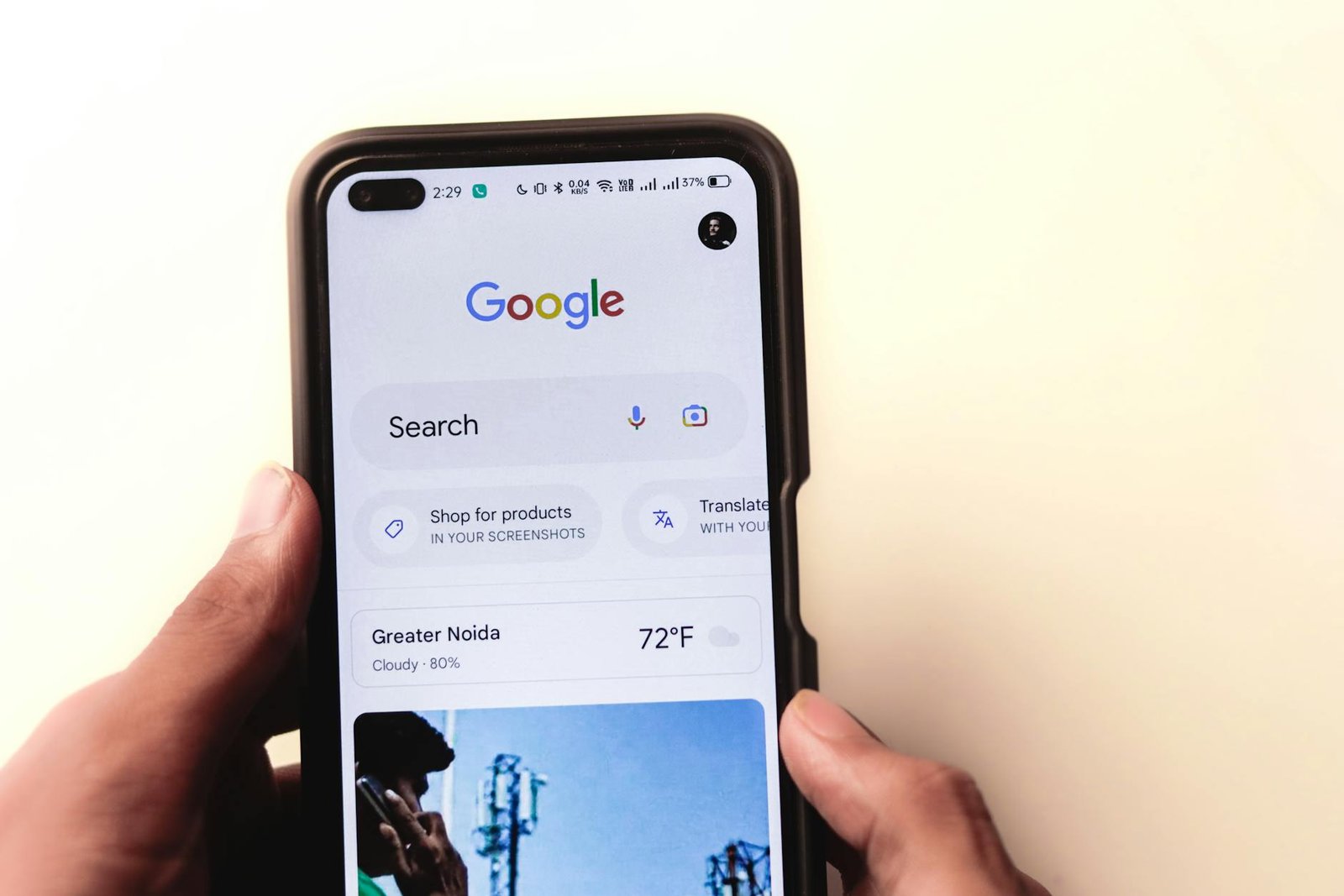Looking for top PPC companies to manage your online advertising campaigns? Learn how experts can optimize your Pay-Per-Click strategy for maximum results.
Top PPC Companies: Finding the Right Partner for Your Advertising Needs
When it comes to running successful online advertising campaigns, Pay-Per-Click (PPC) is a strategy that cannot be ignored. PPC allows businesses to target specific keywords and demographics. Ensuring that their ads reach the right audience at the right time. However, managing PPC campaigns can be a daunting task, especially for businesses with limited resources or expertise in this area. That’s where the top PPC companies come in.
What are PPC Companies?
PPC companies are digital marketing agencies that specialize in managing and optimizing Pay-Per-Click campaigns for their clients. These companies have a team of experts who are well-versed in the latest PPC strategies and tools. Allowing them to create and implement effective campaigns that drive results.
Top 5 PPC Companies: A Comprehensive Overview
Pay-per-click (PPC) advertising is a highly effective digital marketing strategy that can drive targeted traffic to your business website by placing ads in strategic positions online. Here’s an overview of the top five PPC companies that can help amplify your online presence and ensure your advertising budget is allocated for maximum return.
- Disruptive Advertising
- Expertise: Disruptive Advertising specializes exclusively in PPC, with an emphasis on data-driven strategies and transparent reporting.
- Key Features: They focus on audience targeting and dynamic ads that adapt to user behavior and preferences, improving overall engagement and conversion rates.
- Notable Clients: ABC, Fandango, Guitar Center.
- WebFX
- Expertise: With an award-winning history in digital marketing, WebFX offers its clients outstanding PPC services characterized by innovation and custom solutions.
- Key Features: They provide comprehensive PPC management along with the integration of AI and machine learning technologies for predictive analytics and better decision-making.
- Notable Clients: Verizon, Auntie Anne’s, FujiFilm.
- Ignite Visibility
- Expertise: Ignite Visibility is famed for aligning PPC with overall business objectives, and creating holistic digital marketing campaigns that encompass SEO, social media, and more.
- Key Features: Their work includes detailed attention to creative ad copy, targeted keyword selection, and strategic bid management.
- Notable Clients: Tony Robbins, The General, 5-Hour Energy.
- KlientBoost
- Expertise: KlientBoost’s creative approaches to PPC stand out in the market. They are known for rapid testing and agile methodologies to continuously enhance campaign performance.
- Key Features: Their service includes tightly integrated strategies where PPC is blended with landing page optimization and conversion rate optimization for better results.
- Notable Clients: Airbnb, Stanford University, Nectar.
- JumpFly
- Expertise: Specializing in PPC since 2003, JumpFly has an established reputation for professionalism and consistent performance across various online platforms.
- Key Features: They stay ahead of the curve by using the latest tools for PPC management, including advanced analytics and real-time data processing.
- Notable Clients: Uncommon Goods, Battery Mart, Discover.
When selecting a PPC company, consider a firm that aligns with your business goals, has a demonstrable track record, and can provide tailored strategies to meet your specific market needs. These top agencies provide a blend of innovation, comprehensive strategy, and measurable results that make them leaders in the PPC field.
Comparison Chart of the Top 5 PPC Companies
The table below provides a side-by-side comparison of key attributes of the top 5 PPC companies to help you quickly assess which might be best suited for your advertising needs:
| Company | Expertise | Key Features | Notable Clients |
|---|---|---|---|
| Disruptive Advertising | Specialized in PPC | Data-driven strategies, audience targeting, dynamic ads | ABC, Fandango, Guitar Center |
| WebFX | Digital marketing | AI integration, comprehensive management, custom solutions | Verizon, Auntie Anne’s, FujiFilm |
| Ignite Visibility | PPC and Digital marketing | Strategic bid management, targeted keyword selection, holistic campaigns | Tony Robbins, The General, 5-Hour Energy |
| KlientBoost | PPC and CRO | Agile methodologies, landing page optimization, conversion rate optimization | Airbnb, Stanford University, Nectar |
| JumpFly | PPC since 2003 | Advanced analytics, real-time data processing, professional strategy | Uncommon Goods, Battery Mart, Discover |
This comparison chart outlines the primary expertise, key features, and notable clients of each company. This can guide you in making an informed decision on which PPC company’s strengths align best with your specific business objectives and required services.
Top 5 PPC Companies in India
India has become a hub for digital marketing expertise, particularly in the realm of Pay-Per-Click (PPC) advertising. These top PPC companies in India are known for their robust strategies and exceptional results. Ensuring that your advertising efforts reach the desired audience efficiently. Here is an overview of the top five PPC companies in India to consider when looking to enhance your online advertising strategies.
- Techmagnate
- Expertise: Techmagnate has extensive experience in PPC and a notable reputation for managing sizable, effective campaigns.
- Key Features: They offer tailored PPC services that include mobile ads, remarketing, and shopping ads, alongside their emphasis on achieving high ROI through meticulous keyword analysis and ad placement strategies.
- Notable Clients: Airtel, Honda, Reliance.
- PageTraffic
- Expertise: PageTraffic is particularly adept at integrating PPC with overarching SEO goals to maximize visibility and drive conversion.
- Key Features: Their approach includes comprehensive campaign analysis, continuous testing, and fine-tuning advertisements for optimized performance.
- Notable Clients: Raymonds, OLX, Stellar.
- AdGlobal360
- Expertise: Known for its comprehensive digital marketing solutions, AdGlobal360 uses a data-driven approach to PPC which maximizes campaign effectiveness.
- Key Features: They specialize in strategic keyword selection, competitive analysis, and creating compelling ad copies that engage the targeted demographic.
- Notable Clients: Maruti Suzuki, HDFC, Roca.
- Bruce Clay India
- Expertise: An arm of the globally recognized Bruce Clay Inc., this company brings international standards to the Indian market with a focus on up-to-date PPC tactics and strategies.
- Key Features: They are experts in reducing wasted ad spend and increasing ad performance through advanced targeting and split-testing methods.
- Notable Clients: Wego, Audi, Sulekha.
- Profit By Search
- Expertise: The first Google Certified AdWords partner in India, Profit By Search excels in offering specialized PPC services that align with global trends and tactics.
- Key Features: They provide end-to-end PPC solutions that involve detailed tracking, analysis, and optimization to ensure cost-effective ad spending.
- Notable Clients: Mothercare, Stellar, Dabur.
When it comes to choosing a PPC company in India, these top agencies offer a wide variety of approaches and specialties that can cater to diverse advertising needs. Their significant local and global expertise, coupled with advanced technological tools, makes them ideal partners in escalating your digital marketing efforts. Whether your focus lies in direct conversions, brand expansion, or market capture. These companies provide expert strategies and proven results that can significantly benefit your PPC campaigns. Consider these options to boost your online presence in the competitive digital landscape of India.
Why Should You Hire a PPC Company?
While it is possible to manage your PPC campaigns in-house, hiring a top PPC company offers several advantages:
1. Expertise and Experience
PPC companies have years of experience in managing campaigns across various industries and niches. They have a deep understanding of the PPC landscape and stay up-to-date with the latest trends and best practices. By partnering with a PPC company, you gain access to this expertise and can leverage their knowledge to create more effective campaigns.
2. Time and Resource Savings
Managing PPC campaigns requires time, effort, and resources. From keyword research and ad creation to campaign monitoring and optimization, there are numerous tasks involved in running successful PPC campaigns. By outsourcing these tasks to a PPC company, you free up your time and resources, allowing you to focus on other important aspects of your business.
3. Cost Efficiency
Contrary to popular belief, hiring a PPC company can save you money in the long run. These companies have the expertise to optimize your campaigns and improve your return on investment (ROI). They can identify areas of waste, eliminate underperforming ads, and allocate your budget more effectively, ensuring that you get the most out of your advertising dollars.
4. Access to Advanced Tools and Technologies
Top PPC companies have access to advanced tools and technologies that can enhance the performance of your campaigns. From keyword research tools to analytics platforms, these companies invest in the latest technologies to gain valuable insights and make data-driven decisions. By partnering with a PPC company, you gain access to these tools without the need for additional investment.
How to Choose the Right PPC Company for Your Business
With so many PPC companies out there, choosing the right one for your business can be a challenging task. Here are some factors to consider when making your decision:
1. Experience and Expertise
Look for a PPC company that has a proven track record of success. Check their portfolio and client testimonials to get an idea of their experience and expertise. It’s also a good idea to ask for case studies or examples of their previous work to see if they have experience in your industry or niche.
2. Services Offered
Consider the services offered by the PPC company. Do they only offer PPC management, or do they provide additional services like landing page optimization or conversion rate optimization? Depending on your needs, you may want to choose a company that offers a comprehensive range of services to maximize the effectiveness of your campaigns.
3. Communication and Reporting
Effective communication is crucial in any business relationship. Look for a PPC company that provides regular updates and reports on the performance of your campaigns. They should be transparent about their strategies and be able to explain the results in a way that is easy to understand.
4. Budget and Pricing
Consider your budget and the pricing structure of the PPC company. While it’s important to find a company that offers competitive pricing, remember that quality and expertise come at a cost. Avoid companies that offer extremely low prices, as they may not deliver the results you’re looking for.
5. Client Support
Lastly, consider the level of client support provided by the PPC company. Will you have a dedicated account manager who will be available to answer your questions and address your concerns? Having a reliable point of contact can make a big difference in the success of your PPC campaigns.
Conclusion
When it comes to running successful PPC campaigns, partnering with a top PPC company can make all the difference. These companies have the expertise, experience, and resources to create and optimize campaigns that drive results. By considering factors such as experience, services offered, communication, budget, and client support, you can find the right PPC company to meet your advertising needs and take your online marketing efforts to the next level.











